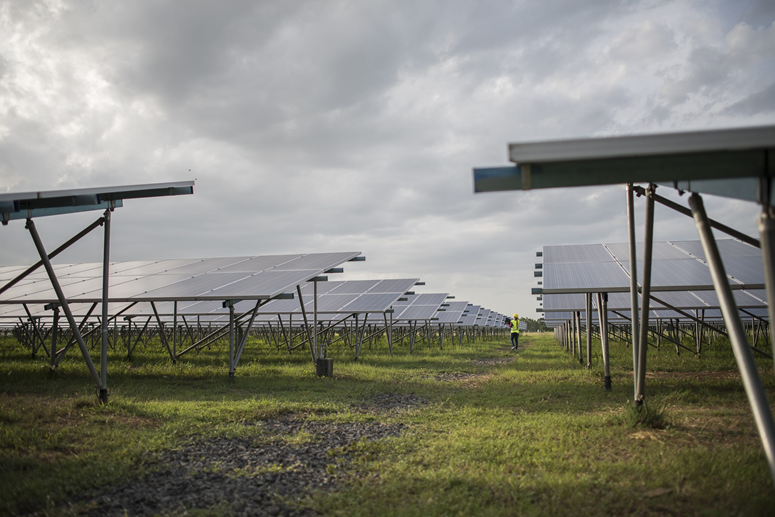Green hydrogen production with concentrated solar energy

Green hydrogen and solar energy
A team of scientists has successfully developed a system to use concentrated solar power (CSP) to produce green hydrogen. This system harnesses up to 40% of the sun's heat, far outperforming current devices that use only 7% of solar heat.
Researchers at the Massachusetts Institute of Technology (MIT) said that when talking about green hydrogen produced through solar energy, electrolyzers that use solar cells to direct electricity first come to mind. However, the MIT team, led by Ahmed Ghoneim, sought to use heat directly. The article adds.

A station for producing and pumping green hydrogen gas in a power station.
The article also explained that the developed process, called the “thermochemical hydrogen process” (STCH). It is characterized by low operating cost and especially high efficiency, which is significantly superior to previous experiments.
The scientists explained: “First, water in the form of steam is exposed to the metal. This causes it to absorb oxygen from the steam, and leave behind the hydrogen.” They added: “Once the hydrogen is separated, the oxidized (or rusty) metal is heated under vacuum. Which reverses the rusting process and renews the metal. Once the oxygen is removed, the metal can be cooled and exposed again to steam to produce more hydrogen. This process can also be repeated hundreds of times, inside “metal boxes” where the physical-chemical separation between oxygen and hydrogen takes place.
A system for producing hydrogen with low energy efficiency.”
A team of researchers has presented an innovative design to produce hydrogen using limited amounts of energy. The efficiency of this system depends on its design in the form of a train, where the “boxes” are arranged sequentially over a circular orbit. Two trains move in opposite directions on different tracks and take turns crossing through hot and cold areas. They are exposed to the concentrated heat of the sun , which can reach 1500 degrees Celsius. Then they pass through a colder area (1000 degrees Celsius). They allow hydrogen production. The temperature changes of the “cars” of the two trains are obtained mainly by direct heat exchange.

Illustration of green hydrogen production
The reactors in the first train, located on opposite sides of the circular track. It transfers its heat by radiation to that facing it (on an unheated part).
At the same time, the second train moves around the first train in the opposite direction, operating at cooler temperatures. This allows oxygen to be removed from the hotter internal train, without the need for mechanical pumps.
The research team intends to build a pilot model in 2024 to test the idea, before conducting an initial test for small-scale clean energy production.
Source : wesites

